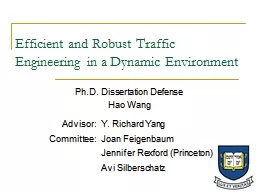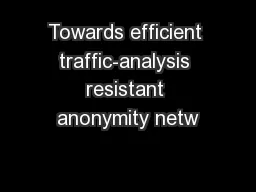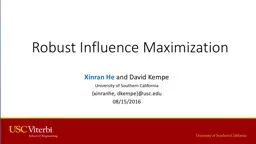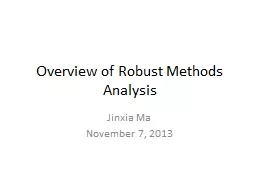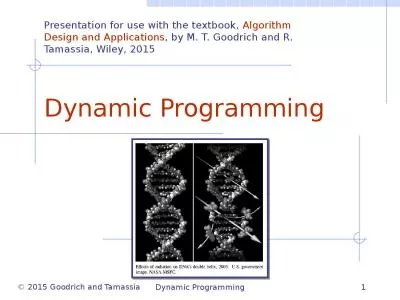PPT-Efficient and Robust Traffic Engineering in a Dynamic Environment
Author : tatiana-dople | Published Date : 2018-09-22
PhD Dissertation Defense Hao Wang Y Richard Yang Joan Feigenbaum Jennifer Rexford Princeton Avi Silberschatz Advisor Committee Efficient and Robust Internet Traffic
Presentation Embed Code
Download Presentation
Download Presentation The PPT/PDF document "Efficient and Robust Traffic Engineering..." is the property of its rightful owner. Permission is granted to download and print the materials on this website for personal, non-commercial use only, and to display it on your personal computer provided you do not modify the materials and that you retain all copyright notices contained in the materials. By downloading content from our website, you accept the terms of this agreement.
Efficient and Robust Traffic Engineering in a Dynamic Environment: Transcript
Download Rules Of Document
"Efficient and Robust Traffic Engineering in a Dynamic Environment"The content belongs to its owner. You may download and print it for personal use, without modification, and keep all copyright notices. By downloading, you agree to these terms.
Related Documents

